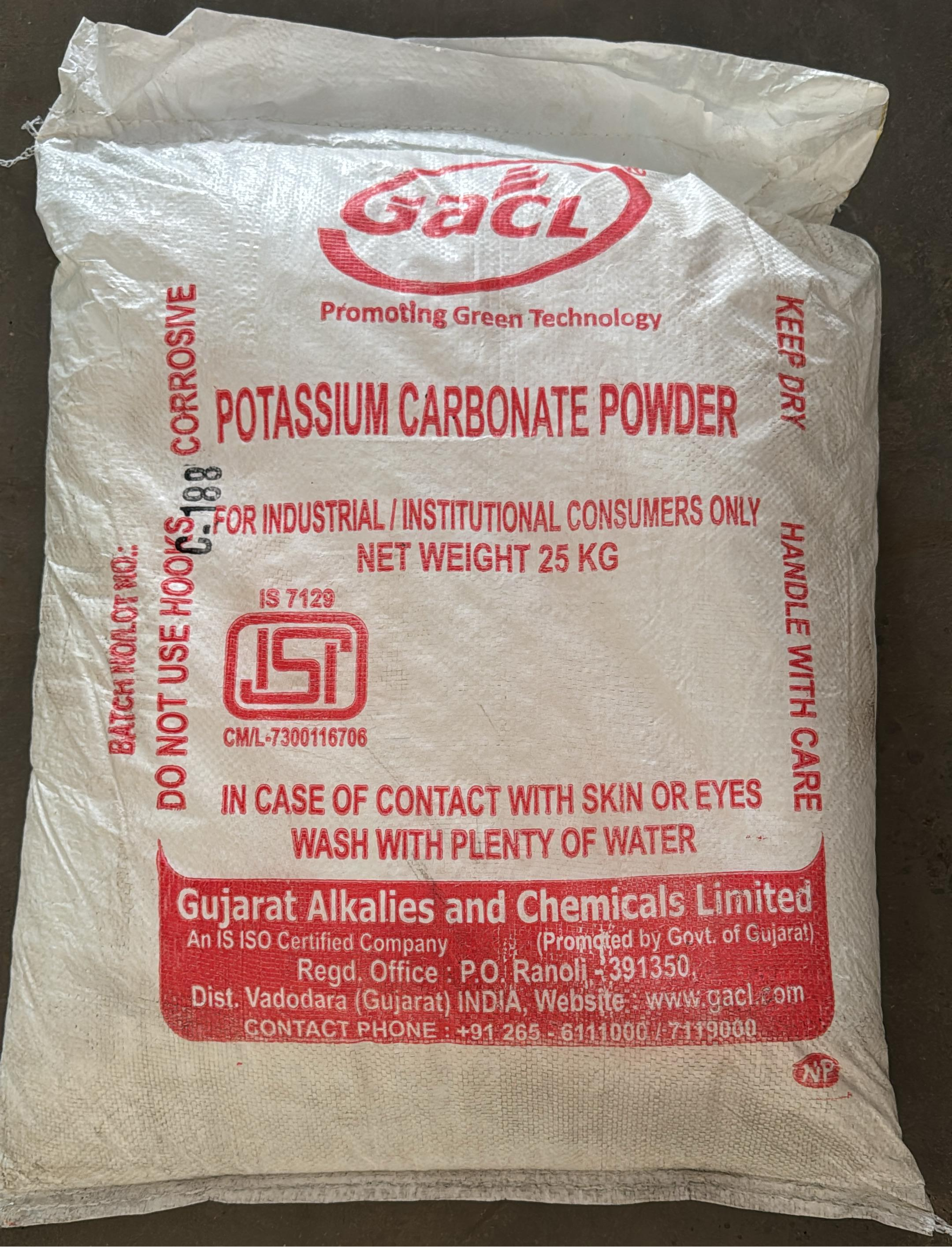
2025-03-15T13:04:13
Potassium carbonate is the inorganic compound with the formula K2CO3. It is a white salt, which is soluble in water and forms a strongly alkaline solution. It is deliquescent, often appearing as a damp or wet solid. Potassium carbonate is mainly used in the production of soap and glass.[3] Commonly, it can be found as the result of leakage of alkaline batteries.[4] Potassium carbonate is a potassium salt of carbonic acid. This salt consists of potassium cations K+ and carbonate anions CO 2− 3 , and is therefore an alkali metal carbonate. History For a longer section on a related group of chemicals with much common history, see Potash § History. Potassium carbonate is the primary component of potash and the more refined pearl ash or salt of tartar. Historically, pearl ash was created by baking potash in a kiln to remove impurities. The fine, white powder remaining was the pearl ash. The first patent issued by the US Patent Office was awarded to Samuel Hopkins in 1790 for an improved method of making potash and pearl ash.[5] In late 18th-century North America, before the development of baking powder, pearl ash was used as a leavening agent for quick breads.[6][7] Production The modern commercial production of potassium carbonate is by reaction of potassium hydroxide with carbon dioxide:[3] 2 KOH + CO2 → K2CO3 + H2O From the solution crystallizes the sesquihydrate K2CO3·1.5H2O ("potash hydrate"). Heating this solid above 200 °C (392 °F) gives the anhydrous salt. In an alternative method, potassium chloride is treated with carbon dioxide in the presence of an organic amine to give potassium bicarbonate, which is then calcined: 2 KHCO3 → K2CO3 + H2O + CO2 Applications (historically) for soap, glass, and dishware production;[citation needed] as a dietary potassium supplement, containing 56% of elemental potassium, [8] in tablet or powder form to address low blood potassium levels caused by inadequate nourishment, nausea and vomiting, diarrhea, or potassium-depleting medications such as corticosteroids or diuretics;[9][10] as a mild drying agent where other drying agents, such as calcium chloride and magnesium sulfate, may be incompatible. It is not suitable for acidic compounds, but can be useful for drying an organic phase if one has a small amount of acidic impurity. It may also be used to dry some ketones; alcohols, and amines prior to distillation.[11] in cuisine, where it has many traditional uses. It is used in some types of Chinese noodles and mooncakes, as well as Asian grass jelly and Japanese ramen. German gingerbread recipes often use potassium carbonate as a baking agent, although in combination with hartshorn;[citation needed] in the alkalization of cocoa powder to produce Dutch process chocolate by balancing the pH (i.e., reduce the acidity) of natural cocoa beans; it also enhances aroma—the process of adding potassium carbonate to cocoa powder is usually called "Dutching" (and the products referred to as Dutch-processed cocoa powder), as the process was first developed in 1828 by Dutchman Coenraad Johannes van Houten;[citation needed] as a buffering agent in the production of mead or wine;[citation needed] in antique documents, it is reported to have been used to soften hard water;[12] as a fire suppressant in extinguishing deep-fat fryers and various other B class-related fires;[citation needed] in condensed aerosol fire suppression, although as the byproduct of potassium nitrate;[citation needed] as an ingredient in welding fluxes, and in the flux coating on arc-welding rods;[citation needed] as an animal feed ingredient to satisfy the potassium requirem

Have a question? Ask here!
Required fields are marked *